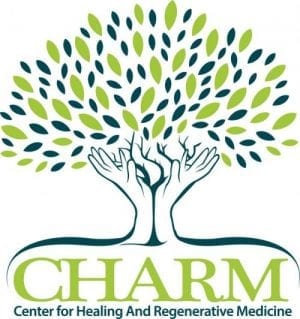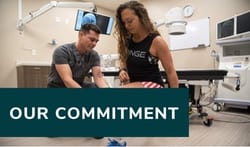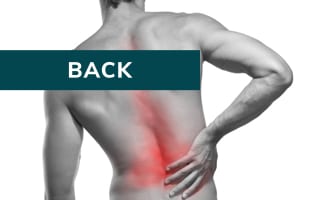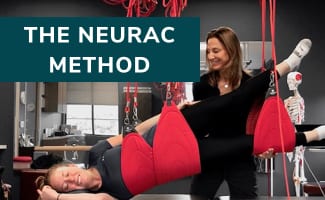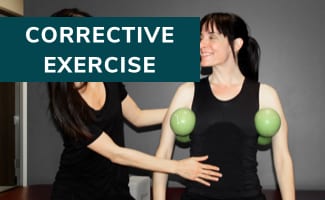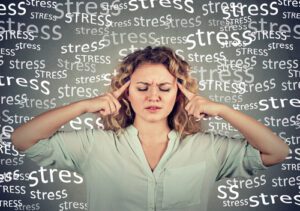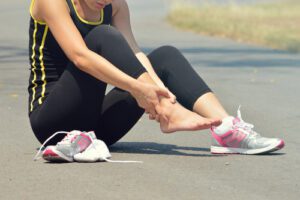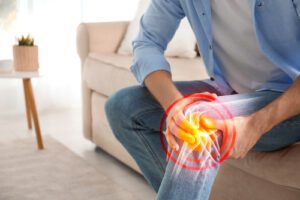In today’s world we are dealing with new issues, and there are many conversations around wearing a mask. Now that COVID is here and may be here to stay for a while, there is new consideration and frustration over the need to use appropriate face coverings. So what is the evidence for or against wearing masks? How can this impact us and the people around us?
How is COVID-19 Transmitted?
Like many other plagues and illnesses documented throughout history, the COVID-19 virus is transmitted primarily by aerosolized respiratory droplets generated when people speak, cough, sneeze, sing and breathe. Although there may be transmission by respiratory droplets or aerosols landing on surfaces, this does not seem to be the primary source of transmission.

The average time from exposure to symptom onset for COVID-19 is 5-6 days but can be up to 14 days. This is a concerning fact as persons exposed to the virus can be contagious during the pre-symptomatic period, making the risk of pre-symptomatic transmission high.
The COVID virus is more contagious than the flu.
Why Wear a Mask?
Appropriate face coverings help to limit the spread of the COVID virus by reducing the emission of virus laden droplets. Wearing a mask may be especially effective at reducing transmission rates by asymptomatic or pre-symptomatic individuals. This population accounts for up to 50% of transmission.
Multilayer cloth masks have been shown to block the transmission of large particles (ie. 20-30 microns) and particles as small as 10 microns by as much as 50-80 % and reduce the forward motion of any particles that are not captured.
Not only does wearing protective face gear reduce the spread of the COVID virus by an infected mask wearer to others, it can also reduce the transmission of large and small particles from entering a mask by an uninfected wearer, further reducing risk of transmission.

There is also evidence that when a face covering is worn people tend to touch their hands to their face less often which may contribute to reduced transmission.
What Kind of Masks are Effective?
The CDC recommends that the most effective cloth coverings are those with multiple layers and high thread count. Use of an N95 or a surgical mask with multiple layers is as effective if not more so.
What is the Evidence for Wearing a Mask?
The Lancet Journal published an article from observational studies across 172 countries showed that wearing a multilayer surgical mask can reduce the risk of infection by up to 85%.
Wearing a protective face covering, whether it is made of multiple layers of cloth or it is a multilayer disposable surgical mask, increases personal safety and spread of the virus to others.
Recent data suggest that universal mask use could lower the incidence of infections and therefore reduce mortality. Additional data show that increasing universal masking by 15% could also reduce lockdowns as well as reduce losses by one trillion dollars or 5% of the gross domestic product.

There are many stories of the use of legitimate face covers on airplanes with one infected person and no transmission of the virus to surrounding passengers, despite a flight time of 10 hours.
What is the Mask Policy at CHARM?
At CHARM we consider the health and safety of our patients and employees paramount above all else. We follow the guidelines published by the Texas Medical Association regarding best safe practices for protecting patients and employees. The guidelines continue to stress the use of masks, social distancing and hand washing to reduce transmission of COVID 19.
Effective 03/15/21, CHARM’s safety protocol includes:
- You must have an appropriate face covering on prior to entering the building. Only patients and authorized visitors or delivery services will be permitted entry.
- You will still be asked to wash your hands upon entering the clinic.
- You will be encouraged to maintain 6′ social distance when possible. Our check in process and waiting room set up is currently designed to support this.
- We will continue to disinfect and clean all waiting room, restroom and patient room areas.
